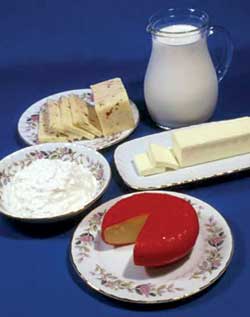Lab Talk

A movement, indeed, is what organic stands for; however, consumers often associate organic with healthy, which is a threat that some conventional dairy foods manufacturers are concerned with at this time.
At this year’s Dairy Forum, January 19-22, during a panel discussion on organic dairy, conventional processors raised the concern that some consumers will begin to question the safety, quality and efficacy of non-organic products.
Is the concern real? It should not be, as organic refers to a process guarantee or an agricultural production methodology.
“The word organic stands for a commitment to agricultural practices that strive for a balance with nature, using methods and materials which are of low impact to the environment,” says Chuck Marcy, president and CEO, Horizon Organic Holding Co., Longmont, Colo. “Interestingly, 63% of consumers in a recent survey believe that organic foods are healthier than their conventional counterparts.”
Is the concern real? Time will tell.
According to Datamonitor, dairy foods are leading the organic food movement with an anticipated compound annual growth rate of 24% from now through 2005. Organic milk, by far, is the leading product within the dairy category, and currently represents 1.7% of all fluid milk sales in conventional grocery stores, and almost 2% of all retail fluid milk sales.
For those of you contemplating the idea of going organic, here are things to know.
First of all, your manufacturing and handling facility, along with product formulation, must be certified organic by an independent state, private or non-profit organization. Currently there are 74 certifying agents in the United States that have gained USDA accreditation. These independent third-party agents certify, audit and monitor their customers, ensuring that all components of the supply chainfrom farmer to grocerare upholding the standards set forth as part of the National Organic Program (NOP), which is enforced by USDA.
“Though the number of steps to organic certification varies by certification agency, QAI’s process is made up of five steps,” says Ellen Holton, dir. of marketing and business development, Quality Assurance International Inc., San Diego, a certifying agency. “These steps are application, inspection, review, resolution and certification. The length of time to accomplish these steps varies by agency. On average, with dairy processing operations, we take about eight to 10 weeks.
“Two basic tenants for a dairy processor are segregation of organic and non-organic products, and prevention of contamination of organic products, meaning, organic products must have no contact with prohibited substances,” Holton says. “Volatile, synthetic solvents and other synthetic processing aids are prohibited.
“The benefits of the NOP are that organic claims are now standardized and the playing field is leveled for all participants,” she adds.
There are four organic labeling options available. They are:
-
100% Organic: Products containing only 100% organically produced ingredients (excluding salt and water).
-
Organic: Products containing at least 95% organically produced ingredients by weight (excluding salt and water).
-
Made with Organic Ingredients: Products containing at least 70% organically products ingredients by weight (excluding salt and water).
- No Organic Label Declaration: Products made with less than 70% organically produced ingredients by weight. These products can use the term organic only to describe specific ingredients used in the formulation, and only in the ingredient statement.
To obtain a free list of generic organic ingredients available to food manufacturers, contact the Organic Materials Review Institute (www.omri.org). Keep in mind that when formulating organic foods, nonorganically produced ingredients may be used when processing an organic product if there is no organic equivalent. Additional organic resources include the Organic Trade Association (www.ota.com) and the final NOP rule (www.ams.usda.gov/nop/).
Looking for a reprint of this article?
From high-res PDFs to custom plaques, order your copy today!




